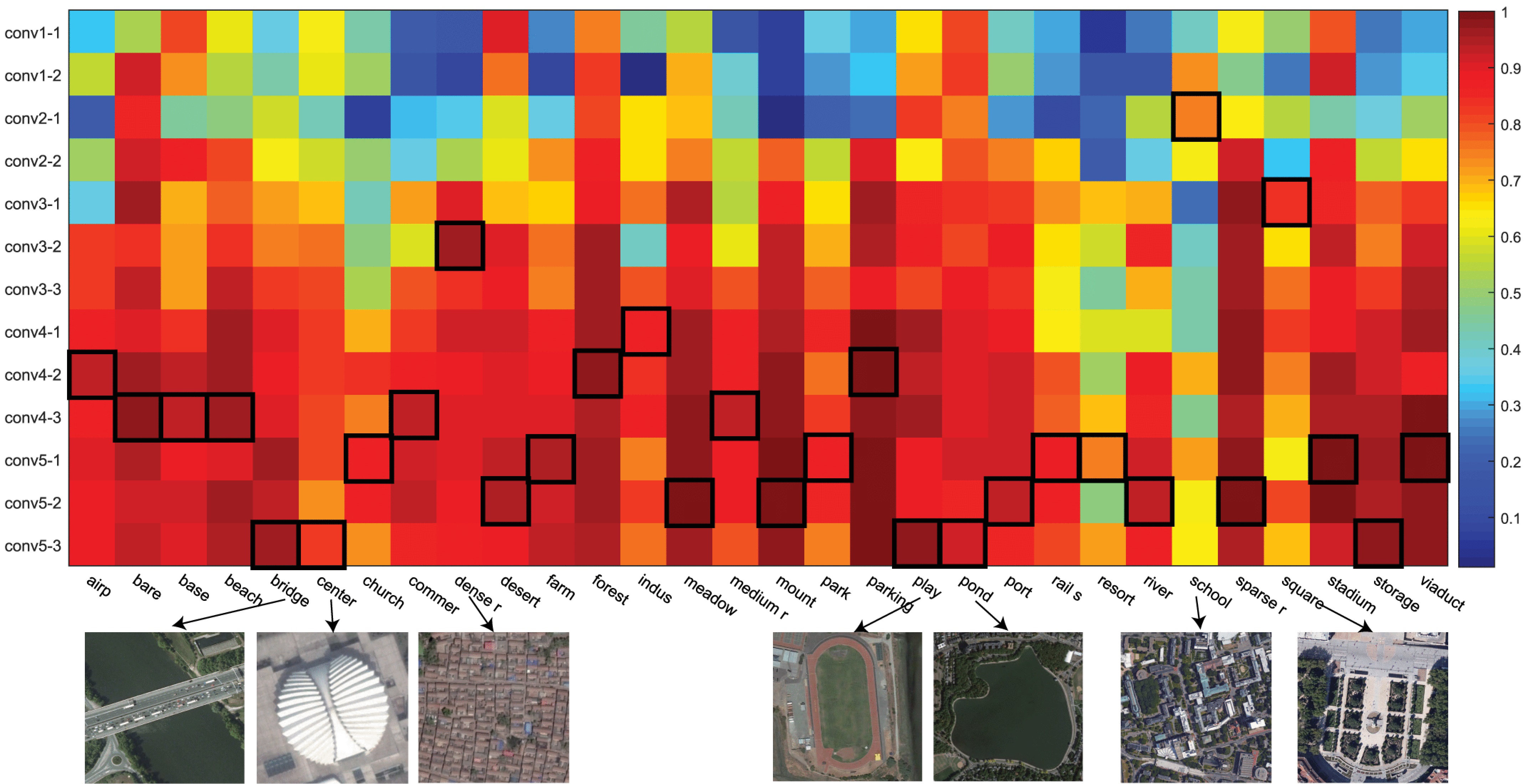Remote sensing (RS) scene classification is a challenging task due to various land covers contained in RS scenes. Recent RS classification methods demonstrate that aggregating the multilayer convolutional features, which are extracted from different hierarchical layers of a convolutional neural network, can effectively improve classification accuracy.
However, these methods treat the multilayer convolutional features as equally important and ignore the hierarchical structure of multilayer convolutional features. Multilayer convolutional features not only provide complementary information for classification but also bring some interference information (e.g., redundancy and mutual exclusion).
In this paper, a gated bidirectional network is proposed by a research team led by Prof. Dr. LU Xiaoqiang from Xi'an Institute of Optics and Precision Mechanics (XIOPM) of the Chinese Academy of Sciences (CAS). It integrated the hierarchical feature aggregation and the interference information elimination into an end-to-end network.
At first, the performance of each convolutional feature is quantitatively analyzed and a superior combination of convolutional features is selected. Then, a bidirectional connection is proposed to hierarchically aggregate multilayer convolutional features. Both the top–down direction and the bottom–up direction are considered to aggregate multilayer convolutional features into the semantic-assist feature and appearance-assist feature, respectively, and a gated function is utilized to eliminate interference information in the bidirectional connection. Finally, the semantic-assist feature and appearance-assist feature are merged for classification.
The proposed method can compete with the state-of-the-art methods on four RS scene classification data sets (AID, UC-Merced, WHU-RS19, and OPTIMAL-31).
 Detailed classification results of various convolutional features in each RS scene category. (Image by XIOPM)
Detailed classification results of various convolutional features in each RS scene category. (Image by XIOPM)
(Original research article " IEEE TRANSACTIONS ON GEOSCIENCE AND REMOTE SENSING JANUARY (2020) https://doi.org/10.1109/TGRS.2019.2931801")
Download: